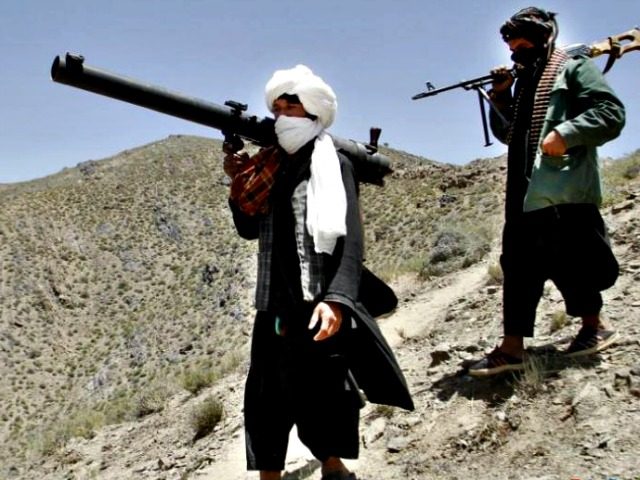Taliban jihadists have reportedly conquered the strategically important city of Sangin in Helmand province, allowing the terrorists to connect to the group’s birthplace Kandahar province.
Through their propaganda website Voice of Jihad, the Taliban claimed it was able to capture high-grade military weapons and equipment after seizing Sangin, including “39 armored personnel carriers, one tank, 34 pickup trucks and other vehicles and equipment.”
After seizing Sangin, the Taliban now controls seven districts and influences/contests six of the 14 districts in Helmand, the country’s top opium-producing region, reports the Long War Journal (LWJ).
Opium cultivation and production provides about 60 percent of funding for the Taliban, and Sangin is the epicenter for trade of the lucrative drug.
Moreover, the New York Times (NYT) acknowledges, the district “is strategically situated between the Helmand River and the border with Kandahar Province,” the birthplace of the Taliban.
“Sangin’s location is very, very important,” proclaimed Gen. Abdul Jabar Qahraman, Afghan President Ashraf Ghani’s personal military envoy to Helmand Province, who recently offered his resignation, citing widespread corruption that he blames for the failed government efforts there.

“By capturing Sangin, the Taliban are now able to connect Helmand with Kandahar,” proclaimed Gen. Qahraman said, referring to Afghanistan’s second-largest city. “Abandoning Sangin is a mistake, but the government is no longer able to keep forces there.”
The Taliban also announced the fall of Sangin through their propaganda website Voice of Jihad.
Taliban jihadists gained control of the “Sangin district administration center, police headquarter, and a key military base” after the district center was “completely overrun by Mujahideen [jihadists] of Islamic Emirate last night.”
Referring to the fleeing Afghan forces, the Taliban added, U.S.-trained Afghan troops “fled by airplanes overnight, leaving many tanks, vehicles, heavy artillery and a sizable amount of military equipment behind.”
LWJ explains:
As the Taliban has ramped up pressure in Helmand, it has also increased its footprint throughout Afghanistan… The number of Taliban controlled and influenced/contested districts has risen from 70 in Oct. 2015 to 100 this month.
This assessment echoes a report by the Special Inspector General for Afghanistan Reconstruction (SIGAR), which noted last month that the Afghan government “has lost territory to the insurgency” and “district control continues to decline.”
The fall on Sangin comes amid the Taliban’s year-long effort to expand their territory in the heartland of Helmand.
Up until the end of the deadliest year (2010) of the Afghan war, terrorists had killed more American soldiers in Helmand and Kandahar than in any other province.
“This [Sangin] district was one of the most dangerous not just in Afghanistan but maybe in the whole world,” Robert M. Gates, then the United States defense secretary, said in 2011 in Sangin.
Those Marines had just “suffered the heaviest losses of any battalion in this 10-year-long war,” added Mr. Gates.
Both Helmand and Kandahar are among Afghanistan’ major opium poppy cultivating provinces, where they can generate millions and perhaps billions in profits to continue waging their terror.

COMMENTS
Please let us know if you're having issues with commenting.